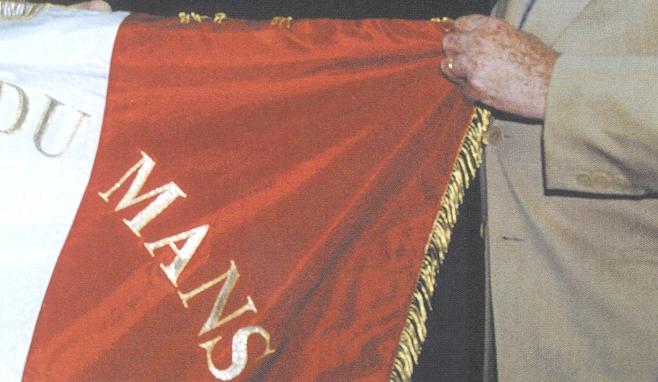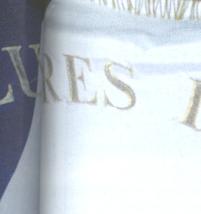ed the production body, and the engine was increased to 3.2 litres with power raised to 750bhp.
Jacky Ickx and Jochen Mass lapped the rest of the field no fewer than seven times at Silverstone, and Moby Dick raced once more, at Le Mans, with a disappointing result because the engine was dogged by a misfire.
The 934 won the European GT Championship in 1976 (driven by Toine Hezemans) and the 935 became the most successful race car that Porsche had produced to date, with a string of victories in the FIA World Championship for Manufacturers, and IMSA Camel GT in the United States.
Singer's skills were switched to developing the 924 Carrera GTR in 1980, when Derek Bell drove for the Porsche factory for the first time at Le Mans, and tumed again to developing the 936 as the 1981 Le Mans winner, the famous 'Jules' car raced by Bell and Jacky Ickx. Responsibility for the 911's competition development was then transferred to Roland
911 & PORSCHE WORLD 4uyost 2003
Kussmaul, who prepared the type 961 version of the 959 four-wheeldrive car, and more recently the 911 GT2 and GT3 race cars.
Encouraged by the 936's last victory at Le Mans, research-anddevelopment director, Helmuth Bott, put Singer in charge of developing the 956, Porsche's first ground-effect car. This won at Le Mans in 1982, 1983, 1984 and again in 1985 (Reinhold Joest was responsible for the successes in 1984 and 1985), and was followed by the longer-wheelbase 962, which won at Le Mans in 1986 and in 1987, as well as taking a trio of IMSA Camel titles between 1985 and 1987.
Although the baton passed to Jaguar, then Mercedes, and went away completely in the 1990-92 period of the 3.5-litre racing-car formula (Peugeot 905, Toyota TS010 and Mazda-Judd), all with 10cylinder engines, it came back to Porsche in 1994 when Singer spotted the potential of the Dauer Porsche 962C as a Grand Touring car. It was, after all, in low-volume
production, Dauer converting race cars to road trim to special order. The Automobile Club de I'Ouest definitely didn't like Singer's interpretation of the Grand Touring (production-car) regulations, but it was strictly within the definitions, just as Moby Dick had been, and another Le Mans 24-Hour victory was added to the list of honours in 1994.
Meanwhile Singer had been busy in America, too, working with TWR director Tony Dowe to turn the former Jaguar XJR-14 into an open-top, Porsche-powered World Sports Car for a works team at Daytona.
The race organisers, unfortunately, had virtually promised Gianpiero Moretti and Ferrari a shot at winning with their purposebuilt 333 SP WSC, and so loaded the Porsche with extra weight and lower boost that it seemed to stand no chance of winning.
Dr Wendelin Wiedeking, now installed as Porsche's CEO in Zuffenhausen, withdrew his team and brought the two cars
Left to right: Herb Fishel, head of GM's racing programme, about to take retirement; Michel Cosson, president of the ACO, also about to retire; Phil Hill, 1961 F1 drivers' champion and three-times Le Mans winner, the great man himself, Norbert Singer, and Donald Panoz, ALMS founder and team owner (Photo: John Brooks)







back to Weissach, where they
remained under dust-sheets until
early 1996, when Reinhold Joest
asked if he might give them an airing at Le Mans.
This is now recent history.
Joest Racing prepared one of these Porsche WSCs for victory
both in 1996 and in 1997, the latter success at the expense of
the factory's GT1 model.
Porsche conceded to Joest with
good grace, but returned to Le Mans in 1998 with a much better
car, the GT1-98. which earned the company its 16th victory at the expense of Toyota, Nissan and Mercedes-Benz.
This was Norbert Singer's final
winning design. He was responsible for another machine, an opentop sports car powered by a 5.0litre V10 engine, but this has never been seen in public, and was officially cancelled at the end of 1998.
Nothing is ever wasted at Weissach, of course. Thus the V10 now powers the Carrera GT road car, which is just going into small-scale production for the 2004 model year. Maybe some elements of the racing car's carbon chassis, or suspension or bodywork, will be resurrected for a new project, but we won't be told about that until later this year.
Ing Singer is due to retire next summer, having played an enormous part in Porsche's racing successes throughout three decades. The Japanese manufacturers that dwarf Porsche financially could only dream about victories on this scale, yet I suspect that his bosses still don't really appreciate the special skills of this gifted engineer. Maybe Michel Cosson and his staff at Le Mans know better. 0